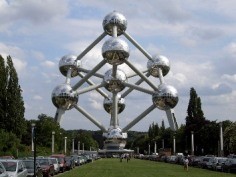Belgium is a developing market* in the use of generic medicines. The Belgian government has only started to introduce policy measures to stimulate generic medicine use in the last decade, although generic medicines have been available on the Belgian market for a longer period of time.
Prior to 2001 Belgium had a very small generics market. However, this was boosted in 2001 by the introduction of a generic medicines policy, including a reference pricing system (RPS) [1, 2].
The introduction of the RPS in 2001 was associated with an increased market share of generic drugs, both in terms of volume and value. The market share of generic drugs grew from 2.05% by volume (prescriptions) and 1.16% in terms of value in 2001 to 6.11% and 4.05%, respectively, in 2003 [3].
The introduction of the RPS was also associated with savings amounting to 1.8% of pharmaceutical expenditure in 2001 and 2.1% in 2002 and was reported to stimulate the Belgian generic drug market [3].
The Belgian generics market is among the smallest in Europe by both volume and value. In 2008 only 8.8% of prescriptions (market volume) in Belgium were dispensed as generics [4], accounting for approximately 5% of the market value [1].
In comparison with other Western European countries, Belgium spends an average amount on medicines. In 2008 a total of 11.9% of the total healthcare budget was spent on medicines compared to only 9.8% in The Netherlands and 7.7% in the UK [5].
In 2005 the share of ‘cheaper pharmaceuticals’ (including generics and off-patent branded medicines with prices at or below the reference price) of all prescribed medicines was 31.7% (in defined daily doses [DDDs]), compared to 18.2% in 2004 [6]. DDDs are used by the WHO to define the average amount of drug used per day by the average patient.
It has been found that the pricing strategies for generic medicines in Belgium vary from molecule to molecule and are influenced by the regulatory approach towards pricing, e.g. the RPS; by market incentives (price competition between generic medicines and competition between originator and generic medicines); by the medication class and by the market power of the manufacturer of the originator medicine [2].
When new generic drugs are introduced to the Belgian market, their market share tends to increase in the first few months, after which it levels off [3].
Key facts – contribution of generic medicines to Belgium
- The market share of generic medicines by volume (prescriptions) in 2008 was only 8.8%, representing around 5% in market value [1].
- The average cost of a branded medicine in Belgium is Euros 1.32 [7]; the average cost of a generic is Euros 0.15 [8].
- In 2007, an average of Euros 218 per head of population per year was spent on medicines in Belgium compared to an average of Euros 382 in Western Europe [9-11].
- For the top 10 active substances by expenditure of originator medicines, generic substitution would reduce public expenditure on the originator medicines containing these active substances by 42% in Belgium [1].
* In countries with developing generic medicines markets, market share of generic medicines does not surpass 40% [8].
References
1. Simoens S, De Coster S. Sustaining Generic Medicines Markets in Europe. April 2006. [monograph on the Internet]. Brussels, Belgium, European Generic Medicines Association (EGA) [cited 2011 May 13]. Available from: www.egagenerics.com/DOC/simeons-report 2006-04.pdf.
2. Simoens S. Generic medicine pricing in Europe: current issues and future perspective. J Med Econ. 2008;11(1):171-5.
3. Simoens S, De Bruyn K, Bogaert M, Laekeman G. Pharmaceutical policy regarding generic drugs in Belgium. Pharmacoeconomics. 2005;23(8):755-66.
4. Business Monitor International. FeBelGen Concerned About Downward Price Pressures. 24 July 2009.
5. Nefarma, Feiten en cijfers [Dutch] [page on the Internet]. The Hague, The Netherlands, Nefarma [cited 2011 May 13]. Available from: www.nefarma.nl/feiten-en-cijfers
6. Österreichisches Bundesinstitut für Gesundheitswesen (ÖBIG). Surveying, Assessing and Analysing the Pharmaceutical Sector in the 25 EU Member States. July 2006.
7. Garattini L, Motterlini N, Cornago D. Prices and distribution margins of in-patent drugs in pharmacy: A comparison in seven European countries. Health Policy 2008;85:305–313.
8. Simoens S. International comparison of generic medicine prices. Current Med Res Opinion 2007;23(11):2647–2654.
9. IFSTAT report January 2008. Tijdschrift van het Instituut voor Farmaco-epidemiologie van België. 2008 January. Available from: www.ipheb.be/Downloads/IFSTAT%20REPORT%203%20-%20NL.pdf
10. FOD Economie. Voorlopige cijfers residerende bevolking per jaar, op 1 januari 1990-2009. Available from: www.statbel.fgov.be/nl/modules/publications/statistiques/bevolking/Tot_residerende_bevolking.jsp
11. ABPI. Did you know? Facts and figures about the pharmaceutical industry in the UK. [page on the Internet]., UK, ABPI [cited 2011 May 13]. Available from: www.abpi.org.uk/our-work/library/industry/Documents/Did%20you%20know_Jan11.pdf











